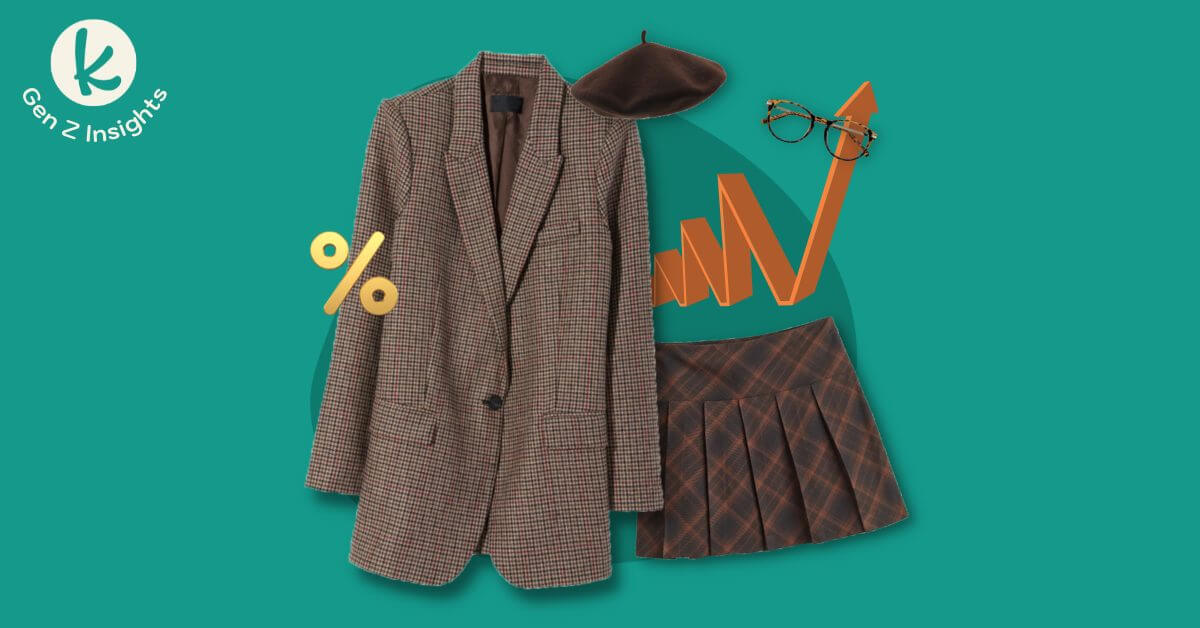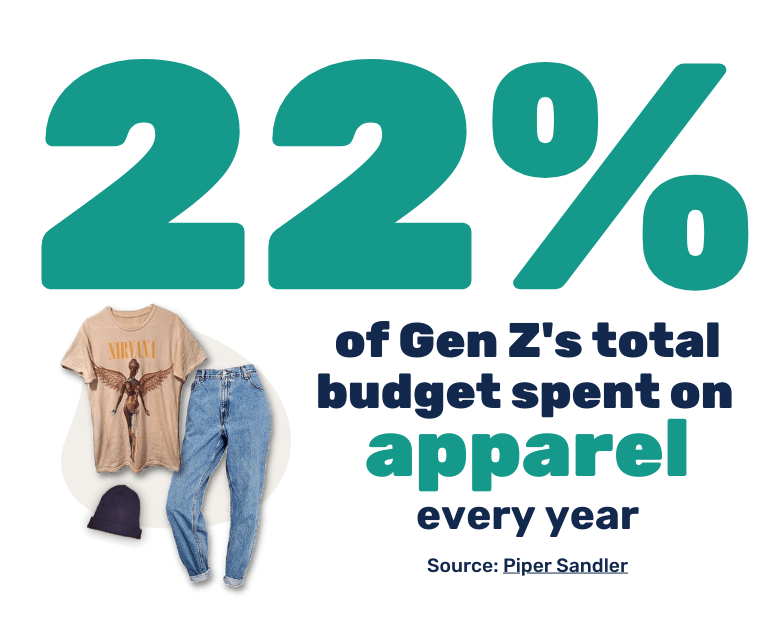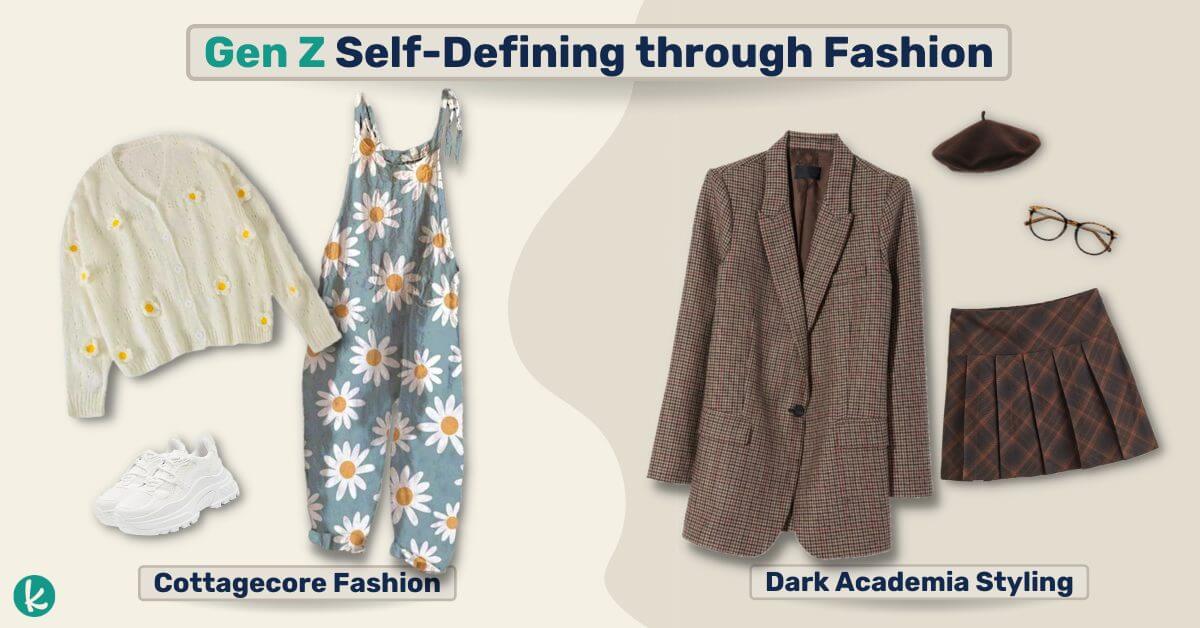
10 Must-Know Gen Z Fashion Statistics
For Gen Z, fashion is a world of aesthetics, one minute video hauls, and nostalgia for the 1990s.
Considering the wealth of fashion choices that today’s youth are offered, it can be difficult to know how best to market to the cohort. Unlike Millennials — who focused mainly on the environmental impacts of the fashion industry — Gen Z has widened their decision-making to include many of the pressing social issues consuming our newsfeeds day in and day out. They also show egalitarian tendencies when deciding how to shop – filling their closets through both online and in-person shopping, with social media playing a huge part in all facets of their fashion decisions.
Of course, ideals are not the only things they consider – like all generations, Gen Z’s fashion intentions are heavily curated to showcase their true selves…all while squeezing their pennies so hard they squeak.
Gen Z will throw dollars behind woke fashion brands
Squeaky pennies aside, Gen Z’s insistence on woke fashion is having quite an impact. With buying power that clocks in around $350 Billion and a self-reported clothing spending average of $454.80 in 2021, it’s no wonder brands are paying attention. (Apparel shapes up to a 22% wallet share for Gen Z.

Because of those growing dollars up for grabs, huge fashion conglomerates like Nike, Levi’s, and Gucci have taken notice and taken stances on societal issues that Gen Z demands action on. Not only do Zoomers expect fashion brands to get on the correct side of history, they’re unfailingly adept at sniffing out disingenuous pandering.
And though the increased access to “trendiness” for less wallet share broadens the appeal of fast fashion to Gen Z’s financial and digital sensibilities, it’s not enough on its own to garner their considerable buying power without abiding by the “Wonderful World of Wokeness” (yes, we coined that one ourselves).
When fast fashion retailer Shein got called out for selling a swastika necklace, they issued a swift apology, understanding that the Zoomer-inspired hashtag #boycottshein could gain enough traction to sink them. This story alone is proof that, Gen Z fully expects ecologically responsible manufacturing and socially responsible marketing when they shop, and hold companies to account.
Gen Z covering their in-store & online bases
to cover their bodies
Metaverse be damned, Gen Z is showing an unpredicted willingness to occupy both meatspace and cyberspace in order to stalk out the best fashion deal’s available. Having grown up with a wealth of information at their fingertips, Gen Z will often opt-in to brick-and-mortar locations to try products out before buying. In fact, Gen Z is 50% more likely to have shopped in-store in 2021 as compared to other generations.
However, the willingness to shop in-person and Gen Z’s penchant for all things digital aren’t mutually exclusive. More than any generation before them, Zoomers are plugged into social media at almost all times. And where they spend that screen time directly correlates to their apparel purchases. 44% of Gen Z has made a purchase on the recommendation of an influencer. And though the concept of the almighty influencer has been around for years, their influence may be waning. TikTok has opened up a new platform for Gen Z to view real opinions of their peers to influence their style and purchase decisions (queue the surplus of everyday creators flooding TikTok). So while Instragram still sits atop the heap for fashion, other social sites are gaining traction quickly.

Zoomers are using these apps in new ways, giving rise to the term “social commerce,” which includes buying products directly through social media apps like Facebook. Though still a fairly nascent trend, social commerce has taken off like a rocket ready to mine the valuable metals of a quickly approaching comet (Don’t Look Up references, anyone?), with more than 97% of Gen Z saying that they take shopping inspiration from social media and are willing to buy products right off the app.
And big surprise here, but Facebook groups aren’t just for your college alumni chats or for browsing local secondhand furniture. Gen Z is tapping Facebook groups for fashion inspo, a place to pick up shopping tips, and twenty first century bazaars with members trading, selling, and buying fashion through that platform.
Not settling to merely follow influencers like Devon Lee Carlson, or shop through Instagram ads, Gen Z has popularized in-app purchasing and hashtags like #tiktokmademebuyit to the tune of 2.3 million views.
TikTok is proving to be a marketing juggernaut in many ways, fueling the rise of Gen Z aesthetics like cottagecore, dark academia, royaltycore, and Y2K. Videos have taken over from Pinterest boards – with those four aesthetics on YouTube garnering over 5 Million views in 2020 alone, and only climbing since. Gone are the days of fashion houses dictating what’s in and what’s out – now the pipeline flows every which way (up, down and across) with trends zipping through social media lines from couturieres to customers and back again.
The rise of new fashion juggernauts
Gen Z’s need to curate a unique aesthetic to define their deep and sometimes moody auras has led to the emmergence of new players in the fashion space.
Depop has seen the fastest growth, having doubled its revenue in the last four quarters to capture a $750 Million share of the youth market. These sales are helped along by the fact that 90% of its user base is under 26. For Zoomers who prefer to buy their vintage threads new, fast fashion retailer Shein comes in at number one by a large margin. Despite earlier social justice missteps, Shein has capitalized on aesthetics, using keyword sorting features for their many flash sales and arranging collections around current trends like mom jeans and 90s throwback gear.
As a group, Gen Z has the tremendous reach of simply being the largest generation of consumers yet to exist. Considering this, it’s no wonder that both ready-to-wear retailers and couture houses are actively courting Zoomers with a two-way dialogue through social media and aesthetic offerings. Brands must now showcase accountability along with their fashion sensibilities.
Trends follow hashtags that spawn aesthetics, and Gen Z is dialed in to every minute shift. The Miranda Priestlys of the world have been ousted as the sole dictators for the agenda of the fashion world; the youth of the world have taken the reins and are leading the way to fashion as a lifestyle and political statement.
TLDR:
The 10 Gen Z Fashion Stats You’re Looking for
💰 Gen Z’s buying power clocks in around $350 Billion annually
👖 Zoomers spent an average of $454.80 on clothing in 2021
👚 Apparel commands a 22% wallet share for Gen Z
🏬 Gen Z is 50% more likely to have shopped in-store in 2021 compared to other generations
🤩 44% of Gen Z has made a purchase on the recommendation of an influencer
#️⃣ 97% of Gen Z says they take shopping inspiration from social media
🤷🏻♂️ Gen Z’s popularized hashtag #tiktokmademebuyit has ammassed over 2.3 million views
📹 4 Gen Z aesthetics have garnered 5 million views on Youtube alone in 2020 (cottagecore, dark academia, royaltycore, and Y2K)
🏦 Depop has captured a $750 Million share of the youth fashion market through its secondhand marketplace
🏆 Shein owns the number one spot within the fast fashion category for Gen Z

Subscribe for industry insights delivered weekly.
Get all the Knit News you need with access to our free newsletter to stay a step ahead on the latest trends driving the industries of tomorrow.


